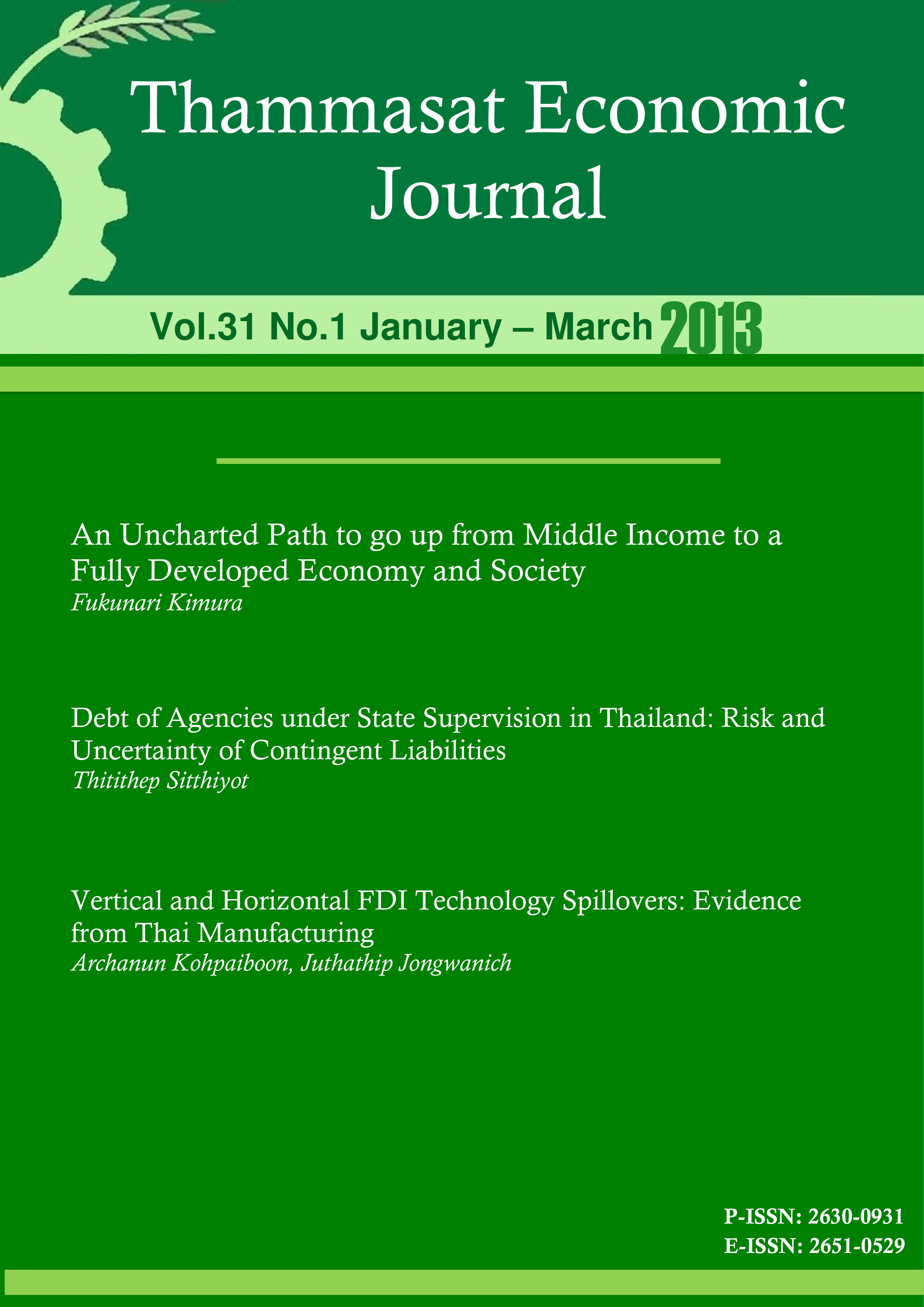Debt of Agencies under State Supervision in Thailand: Risk and Uncertainty of Contingent Liabilities
Keywords:
Public Debt, Fiscal Sustainability, Self-Organized CriticalityAbstract
This study attempts for the first time to compile list of agencies under state supervision in Thailand as well as their outstanding debts in order to provide policy makers more complete picture of public debt. It finds that there are eighty-six agencies with total debts of 3.846 trillion baht as of 2011, accounting for 46.37 per cent of total public debt. The analysis of the effects of debts of agencies under state supervision on fiscal sustainability framework reveals that adding new information on debts of those agencies causes public debt to GDP indicator to be violated, in addition to balanced budget within 2005 and capital expenditure to total budget expenditure, leaving only debt service to total budget expenditure that still remains within the target. This study suggests that government should make an effort to balance budget and lower level of public debt so that they are in line with the targets since prolong budget deficit and rising public debt could cause serious trouble for the government in the future.
References
2.Fiscal Policy Office. (2011). Fiscal Sustainability Framework 2002-2014. available at http://www.fpo.go.th/FPO/modules/Content/getfile.php?contentfileID=819. (last
accessed: 19 December 2012).
3.International Monetary Fund. (2001). Government Finance Statistics Manual 2001. 2nd Edition. available at http://www.imf.org/external/pubs/ft/gfs/manual/index.htm. (last accessed: 17 December 2012).
4.Kahneman, D. (2011). Thinking, Fast and Slow. New York: Farrar, Straus & Giroux. p. 137.
5.National Economic and Social Development Board. (2012). Thailand Competitiveness Report 2012. World Economic Forum on East Asia 2012. available at http://www.nesdb.go.th/ Default.aspx?tabid=426. (last accessed: 17 October 2012).
6.Sitthiyot, T. (2009). Fiscal Sustainability Framework: Good in Theory and Good in Practice?. Chulalongkorn Review. Vol. 84. pp. 5-9.
7.Taleb, N. N. (2007). Fooled by Randomness: The Hidden Role of Chance in Life and in the Markets. London: Penguin Books. p. 4.
8.Taleb, N. N. (2013). Hormesis Is Redundancy. in This Explains Everything: Deep, Beautiful, and Elegant Theories of How the World Works. Edited by John Brockman. New York: Harper Perennial. pp. 347-349.
9.Theparat, C. and Chantanusornsiri, W. (10 October 2012). B2 Trillion of Investment to Focus on Boosting Logistics. Bangkok Post. p. 3.










